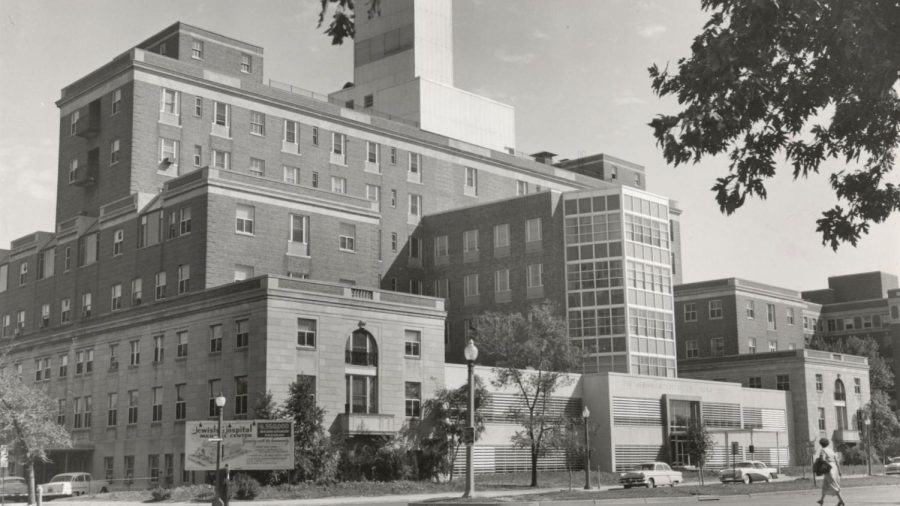The legacy Jewish Hospital continuing in big ways
Published April 20, 2023
St. Louis has a reputation for excellence in medicine that transcends its size as the 21st largest metropolitan area in the country.
Consider that U.S. News & World Report ranks the Siteman Cancer Center at Barnes-Jewish Hospital the No. 10 cancer hospital in the country. The magazine ranks the Washington University School of Medicine at No. 11. It’s not unusual for patients from neighboring states to travel to St. Louis for medical care, particularly when the diagnosis calls for treatment unavailable to them locally.
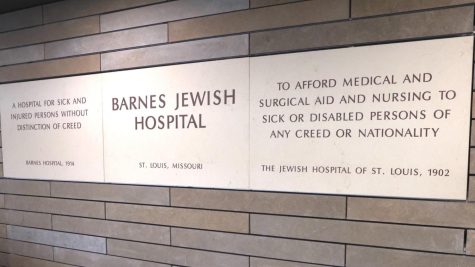
recalls the merger of the two legacy hospitals that make up its name.
How did the Gateway City become known as a healthcare mecca? In many ways, it can be traced back to the legacy of the Jewish Hospital of St. Louis and Jewish philanthropic leaders who emphasized giving back to the community.
Jewish Hospital as a standalone institution ceased to exist when it merged with Barnes Hospital in 1996, but one of its lasting legacies was the formation of the Foundation for Barnes-Jewish Hospital. The foundation has a total asset value just shy of $1 billion, making it the largest charitable foundation in St. Louis based on grant volume.
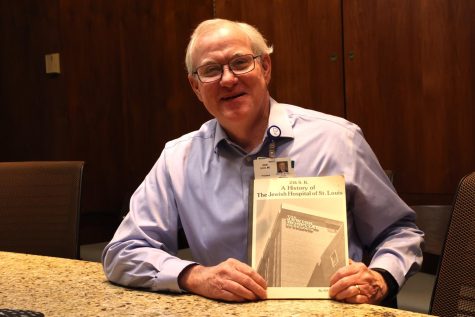
From medical innovation to community outreach education, the St. Louis area is richer due to the efforts of the foundation’s gifts. The foundation touches many areas of the community, said Betsy Gallop Dennis, legacy relations manager.
“We are the largest donor to Washington University School of Medicine,” Dennis said. “We support Barnes-Jewish Hospital, the Goldfarb School of Nursing, Barnes-Jewish West County Hospital, Siteman Cancer Center and Evelyn’s House (an arm of BJC Hospice). We also have what’s called a community grants program that funds the JCC and other programs. For example, we recently made a large gift to the St. Louis Kaplan Feldman Holocaust Museum.”
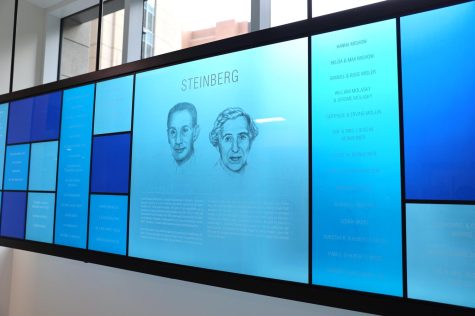
The Jewish Hospital legacy
Jewish Hospital of St. Louis was known as a top health care institution because of its medical staff’s high level of expertise. It was also a leader in attracting charitable gifts. When Barnes and Jewish merged, both hospitals created the Foundation for Barnes-Jewish Hospital through their separate foundation assets. Barnes Hospital contributed $37.7 million to that effort. Jewish Hospital, the smaller of the two, contributed $127.2 million.
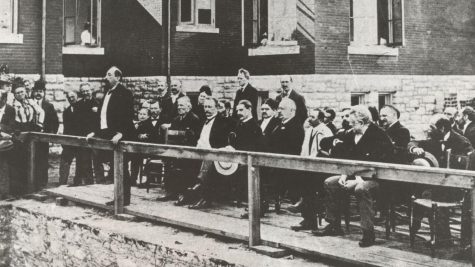
From the outset, the foundation sought to supplement the health care provided by its sponsoring hospitals and fulfill its mission of providing medical care to patients of any religion or economic background. It was also a mission of Jewish Hospital and one of the reasons the hospital attracted the current Barnes-Jewish Hospital president, Dr. John Lynch.
“During my pulmonary and critical care fellowship, I trained at both Barnes and Jewish,” Lynch said. “It was my first real experience of the culture at Jewish Hospital, which was remarkable. The values for patient care, no matter what walk of life, no matter the color of your skin, whatever your background, was evident everywhere, and it dated back to the very beginning.”
Lynch is also president of the Foundation for Barnes-Jewish Hospital, so he can help guide the efforts of the foundation to be in sync with the needs of the hospital. That sometimes means providing health care to people who need it most and often don’t receive it.
“There are so many gaps and needs from traditional funding of health care,” he said. “The foundation allows us to step in and close a gap in funding to stabilize a situation, whether it’s disease or a population that has a gap in their needs. And that’s an enormous benefit to our community.”
The foundation looks for opportunities to fills those gaps, Lynch said. It begins by investing in programs that will stabilize lives. One example is early testing to diagnose breast cancer among at-risk populations. The foundation also helps fund leading-edge research to shorten the cycle from laboratory testing to medical treatment. Another key program funded by the foundation is its direct-to-community services.
“Every year, we give about 10,000 free flu shots,” Lynch said. “We used to have people come to our lobby. Now we go out into the community and neighborhoods. We also have funds that go to social workers who can use the money to get patients stabilized after they leave the hospital, like a wheelchair if they can’t afford it.”
Connected to Jewish community
The Foundation for Barnes-Jewish Hospital retains a significant Jewish connection via its board members, nearly half of whom are leaders in the Jewish community. Harvey Wallace is a partner in the accounting firm Brown Smith Wallace and a veteran volunteer for many Jewish institutions. Wallace joined the foundation board on the recommendation of the late S. Lee Kling.
“Lee opened a lot of doors in the world of philanthropy for me,” Wallace said. “I always had a charitable side, but I learned more about giving from him. The amount of funds that the foundation distributes every year, whether it’s for research or for services, it has made a huge impact in the community. We’re fortunate to have a Barnes-Jewish Hospital in St. Louis. So to be connected to it is just an honor.”
Another Jewish foundation board member is Keith Guller, retired CEO of Essex Industries. Guller said his board involvement affects many people.
“The number of grants the foundation provides that reach the ground level to a lot of folks, people in need, we all benefit from that,” Guller said. “The reward comes from actually seeing the direct benefits. Pedal for the Cause, which is part of the foundation, reaches out to a whole new area of individuals and that money comes back directly to the St. Louis area.”
One of the foundation’s newest board members is Dr. Ken Ludmerer, a master clinician, physician historian and professor at Washington University School of Medicine. Ludmerer called the Foundation for Barnes-Jewish Hospital board exceptional and the foundation itself an “extraordinary organization.”
“I have never known a board and an organization so value laden as this one,” Ludmerer said. “It’s really been inspiring and an honor just to be part of it.”
Ludmerer said the foundation’s approach to fundraising and giving is focused on sustainability.
“Most foundations of its size will dispense money from the earnings of an endowment,” he said. “In addition, the foundation raises money annually to maximize this impact. It’s innovative to continue raising money when you’re that big. There is also extraordinary thought and reflection on how the funds of the foundation can most effectively be used for the good of patients.”
Innovative thought at the foundation also applies to the specific programs its supports, Ludmerer said. Those include cancer and neurological diseases, as well as day-to-day needs that enhance patient care, such as translation services.
“We have translators immediately available to talk with the patient at the bedside and provide services — any language one can conceive of — and the foundation is responsible for that,” Ludmerer said. “Another important area that has not been supported by conventional medical foundations is bringing health services to the community. My hope is that this will become a model for other hospital foundations.
“This is the idea of engaging the community in a very constructive way, making sure people who need home care get it and lessen some of the social determinants of disease. This is quite novel for a hospital and the Foundation for Barnes-Jewish Hospital is supporting it. Extraordinary care coupled with the imagination and willingness to make true departures in the nature of philanthropy I think are highly characteristic of this organization and really make it unique.”



